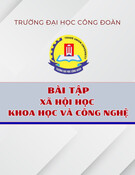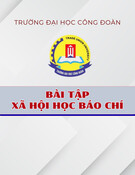
Journal of Development and Integration, No. 79 (2024) 85
* Corresponding author. Email: vanntt@hcmute.edu.vn
https://doi.org/10.61602/jdi.2024.79.10
Received: 09-Sep-24; Revised: 21-Oct-24; Accepted: 25-Oct-24; Online: 08-Nov-24
ISSN (print): 1859-428X, ISSN (online): 2815-6234
K E Y W O R D S A B S T R A C T
Distributive justice,
Job characteristics,
Organization engagement,
Perceived supervisor support,
Procedural justice,
Rewards and recognition,
Textile workers,
Work-family conflict.
The research objective is identify factors affecting organization engagement in textile
enterprises and the relationship between engagement and work-family conflict. Survey
data was collected from 250 workers at textile enterprises in Dong Thap province of
Vietnam. The result of the partial least squares structural equation modelling (PLS-SEM)
showed that Job Characteristics, Perceived supervisor support, Rewards and recognition,
Procedural justice, and Distributive justice impact Organization engagement. However,
perceived organizational support has no relationship with Organization engagement.
Besides, Organization engagement has a negative relationship with Work-family
conflict. Based on the finding, some implications are drawn to improve the organization
engagement in textile enterprises and suggest that workers reduce the work-family conflict
by increasing organization engagement.
The relationship between organizational engagement
and work-family conflict: A case study of textile workers
Nguyen Thi Thanh Van1, *, Tran Van Tien2
1 Ho Chi Minh City University of Technology and Education, Vietnam
2 Dong Thap Community College, Vietnam
1. Introduction
Textile is ranked-third in 10 main export products
of Vietnam. In 2023, the whole textile industry
exported nearly $40.3 billion. The textile industry
creates appoximately 2.5 million jobs for workers
(Vietnam Textile Association, 2023). Textile is an
important industry in Vietnam, driving economic
and social development. However, recently, the lack
of skills and training of the workforce, especially
lack of long-term engagement of employees to their
entreprises, are the challenges that textile companies
in Vienam, in particular, and companies that use
direct labour, in general, have to face.
The reason for the reduction in the textile industry’s
labour force is the profession’s characteristics.
Textile belongs to the light industry which requires
much manual labour for mass production. Textile
companies are constantly expanding production
scale to meet order demand. Workers often have to
work overtime, in high intensity, in confined space
combined with the impact of noise, hot and humid
environment, and high dust concentration. These
factors adversely affect workers’ health, especially
female workers (Dang Thi Van Quy, 2022).
Currently in Vietnam, more than 80% of the
production workforce in garment and footwear
factories is female, which poses a challenge for both
enterprises and female workers. Vietnamese women
are also influenced by traditional East-Asian culture.
No. 79 (2024) 85-92 I jdi.uef.edu.vn

86 Journal of Development and Integration, No. 79 (2024)
They are expected to take care of their family and
children. However, under the pressure of working
overtime, their maintenance of work-family balance
is in increasing conflict.
Work-family conflict is a topic that gathers special
attention from researchers. Netemeyer et al. (1996)
have established a measuring scale for the definition
of work-life conflict. Many studies analyze the
impact of work on life, with the vision towards work-
life balance - personal life. Recently there have been
many studies focusing on the relationship between
engagement and work-life conflict (Jaharuddin &
Zainol (2019), Erwin et al. (2019)). Studies about
engagement demonstrate that workers’ engagement
with their organizations will boost success, financial
outcomes for organization, as well as those workers’
performance (Bates, 2004; Richman, 2006). In
addition, engagement brings work-life balance for
workers (Erwin et al. (2019) and vice versa, work-
life balance also boosts engagement (Jaharuddin &
Zainol (2019). Studying about human behavior is
always pivotal. In order to reinforce the theory about
engagement, it is necessary to continue supplementing
experimental study in certain aspects and specific
professions. Therefore, the study on work-family
conflict in the specific context of the textile industry
in Vietnam is conducted. This study aims to:
- Determine factors affecting textile workers’
organization engagement.
- Examine the relationship between organization
engagement and work-family conflict for textile
workers.
The structure of paper as follows: literature review,
methodology, results and discussion, implications.
2. Literature review
2.1. Work-family conflict
Work-family conflict and Family-work conflict
are concepts studied in the discussion about the
conflict between work and family life. These two
concepts are compatible but they represent different
roles of work and family in the conflict. Netemeyer et
al. (1996) defined “Work-family conflict as a form of
inter-role conflict in which the general demands of,
time devoted to, and strain created by the job interfere
with performing family-related responsibilities.
Family-work conflict is a form of inter-role conflict
in which the general demands of, time devoted to, and
strain created by the family interfere with performing
work-related responsibilities”. This conflict leads
to physical and mental fatigue, increased stress and
burnout (Anderson et al., 2002), lack of concentration,
and low alertness as well as reduced general health
and energy (Frone et al., 1993). Especially for female
employees who have small children, the consequences
of this conflict may be more serious and may cause
these employees to accept giving up work in order to
take care of the family.
Nowadays, many studies have introduced a more
general concept which does not only focus on work
and family conflict but it also inclines towards the
balance of work - family - private (Aycan et al., 2008),
achieving the balance between work, home and other
life roles to which researchers refer as work-life
balance. However, the critical key in human life is
still family and career. Therefore, in this study, we
use the concept of work-family conflict as used by
Netemeyer et al. (1996).
2.2. Employee engagement
More than three decades ago, Kahn was the
first person to research employee engagement.
He concluded that many factors at many levels:
personal, interpersonal, group, intergroup and
organizational shape employee engagement with
their enterprise (Kahn, 1990). Kahn (1990, p. 694)
defines personal engagement as “the harnessing of
organization members’ selves to their work roles; in
engagement, people employ and express themselves
physically, cognitively, and emotionally during role
performances”.
Subsequently, many researchers have contributed
to broadening this concept. Employee engagement
is defined in many different ways, but most often,
it has been defined as an emotional and intellectual
commitment to the organization (Richman, 2006)
or the amount of discretionary effort exhibited
by employees in their jobs (Erwin et al., 2019).
Schaufeli et al. (2002) define engagement “as a
positive, fulfilling, work-related state of mind that is
characterized by vigour, dedication, and absorption”.
Up to now, employee engagement is no longer a new
concept; however, research on it is still necessary for
both enterprises and employees.
Saks (2006) proposed a model of the antecedents
and consequences of employee engagement.
Antecedents included job characteristics, perceived
Nguyen Thi Thanh Van and Tran Van Tien

87
Journal of Development and Integration, No. 79 (2024)
organizational support, perceived supervisor
support, rewards and recognition, procedural justice,
distributive justice. Consequeces included job
satisfaction, organizational commitment, intention
to quit, organizational citizenship behavior. He
claimed that the more resources employees receive
from their organizations, the more they would
engage in their work and organizations. In 2019,
Saks continued this research topic to examine if
there were any changes compared to his research
in 2006. There were more factors of antecedents
such as fit perceptions, leadership, opportunities for
learning and development, job demands. Besides,
task performance, extra-role performance, health
and well-being, stress and strains, burnout were also
added in consequences.
Employee engagement includes two aspects:
job and organization engagements. Job engagement
reflects the work role of employees while organization
engagement reflects the employee’s role as a member
of their organization (Saks, 2006). Saks (2019) also
pointed out that future research should focus on the
characteristics of work affecting engagement (such
as the nature of the job, the level of the position, the
tenure of employees, and employee characteristics).
In addition, future studies should research the work
context and social characteristics which are strong
predictors of job attitudes and behaviours. Therefore,
this research refers to the textile industry with job
characteristics and working environment that are
typical in developing countries. With the desire to
contribute recommendations to textile companies,
we aim towards the concept of organization
engagement.
2.3. Hypothesis development
2.3.1. Job characteristics and organization
engagement
Previous studies mentioned job characteristics as
the degree of variety, autonomy, task identity, task
significance, and feedback that employees perceive
in their jobs (Nassani et al., 2021). Job characteristics
are suggested as challenging tasks, the significance
of the job and the availability of resources to push
employee engagement. Saks (2006, 2019) also
demonstrated the impact of job characteristics on
organization engagement. Therefore, the following
hypothesis is proposed to be tested:
H1: Job characteristics have a positive impact on
organization engagement.
2.3.2. Perceived organizational, supervisor support
and organization engagement
Supportive and trusting relationships will promote
the psychological safety of employees. The open and
helpful working environment encourages them to try
new things without fearing the consequences (Kahn,
1990). Psychological safety stems from care and
support of the organization and supervisors (Saks,
2006).
Perceived organizational support refers to a
general belief that one’s organization values their
contribution and cares about their well-being. When
employees believe that their organization cares about
their happiness, they will try to fulfil their obligations
and become more engaged with the organization
(Saks, 2006).
In the working environment, the supervisor’s
role becomes pivotal. Supervisors have to regularly
provide technical support to employees, instruct
employees with working skills, and assist employees
in solving problems. Direct supervisors are said
to be especially important in building employee
engagement with their organization (Bates, 2004).
Thus, the following hypothesis is proposed:
H2: Perceived organizational support has a
positive impact on organization engagement.
H3: Perceived supervisor support has a positive
impact on organization engagement.
2.3.3. Rewards and recognition and organization
engagement
Every employee wants to be paid commensurately
with their efforts, so enterprises need to ensure the
employee’s income, especially those in the direct
production department. A good remuneration
regime creates trust, encourages employees to work,
and promotes the attachment of interests between
individuals and the collective. Employees who receive
rewards and recognition from their organization will
feel engaged to respond at higher levels (Saks, 2006).
Thus, the hypothesis is as follows:
H4: Rewards and recognition have a positive
impact on organization engagement.
2.3.4. Distributive and procedural justice and
organization engagement
Nguyen Thi Thanh Van and Tran Van Tien

88 Journal of Development and Integration, No. 79 (2024)
Rewards and recognition should be distributed
fairly, and the procedures to apportion them should
be consistent. When employees perceive equity
highly in their organization, they tend to contribute
more through organization engagement (Saks, 2006).
Maslach et al. (2001) also said that if employees
think the fairness in their organization is low, they
will likely leave the organization. Therefore, H5 and
H6 is suggested as:
H5: Distributive justice has a positive impact on
organization engagement.
H6: Procedural justice has a positive impact on
organization engagement.
2.3.5. Organization engagement and Work-family
conflict
Van & Nafukho (2019) researched employee
engagement antecedents and consequences. They
divided the consequences of engagement into 3 parts:
Intra-role behaviours (performance, innovation,
discretionary effort and turnover intention), Extra-role
behaviours (proactivity, knowledge sharing, creativity
and adaptivity), Personal development and growth
(work-family balance, individual psychological
capital, job satisfaction, career commitment).
Burke et al. (2013) found that higher engagement
led to lower work-family conflict. When employees
engage with their organization, they find ways
to reduce levels of family-work conflict. Thus, a
hypothesis is proposed:
H7: Organization engagement has a negative
impact on Work-family conflict
H8: Gender is a control variable for Work-family
conflict
3. Methodology
3.1. Sample
The study is carried out in two steps: qualitative
research to adjust the scale to suit respondents and
Figure 1. Conceptual model
er
0.085
0.015
0.134**
.104
**
0.532***
0.237**
0.019
organizational
d
e
al
Organization
0.715
Work y
Gender
H1 (+)
H2 (+)
H3 (+)
H4 (+)
H5 (+)
H6 (+)
H7 (-)
H8
Job
characteristics
Perceived
organizational
support
Perceived
supervisor
support
Rewards and
recognition
Distributive
justice
Procedural
justice
Organization
engagement
Work-family
conflict
Nguyen Thi Thanh Van and Tran Van Tien

89
Journal of Development and Integration, No. 79 (2024)
research context; quantitative research to collect
primary data.
Qualitative research is conducted by in-depth
interviews with ten experts managing human
resources at textile companies. The content of the
interviews revolves around discussing the factors in
the conceptual model and adjusting the scale of the
concepts before conducting large-scale survey.
Quantitative research is conducted with 270
questionnaires are distributed, and after invalid
questionnaires are removed, 250 samples are used for
data analysis, accounting for 92.6%.
Respondents are workers at textile companies in
Dong Thap province. We chose Dong Thap province
because, according to statistical data of Dong Thap
Province in 2020, the whole textile industry had
24855 employees, accounting for 36.14% of the entire
industry in Dong Thap province. The proportion of
female employees to the total number of employees
in this industry is 86.33%. Most textile enterprises
in Dong Thap province have to deal with problems
such as workers with inconsistency, frequent work
leave, lack of perseverance and patience, and lack of
long-term commitment. This working environment
represents textile companies in other provinces.
3.2. Measures
The measure of Job characteristics inherits from
previous studies (Wan et al., 2018; Nassani et al.,
2021; Saks, 2006) and includes five items.
The measure of other factors is inherited and
adjusted based on the research of Saks (2006) in
which Perceived organizational support includes six
items, Perceived supervisor support includes three
items, Rewards and recognition include nine items,
Distributive justice includes four items, Procedural
justice includes seven items, and Organization
engagement includes five items.
Work-family conflict measure includes five items
used by Netemeyer et al. (1996).
All the items have been measured using a five-
point Likert type scale, with the following ranges and
descriptions: 1 - highly disagree to 5 - highly agree.
Figure 2. Measurement model of the study
Note: * p < 0,05, ** p < 0,01, *** p < 0,001, ns - non significant
Gender
0.085*
0.015ns
0.134**
0.104**
0.272***
0.532***
-0.237***
0.019ns
Job
characteristics
Perceived
organizational
support
Perceived
supervisor
support
Rewards and
recognition
Distributive
justice
Procedural
justice
Organization
engagement
(R2 = 0.715)
Work-family
conflict
(R2 = 0.049)
H1
3
5
6
8
organizational
Organization Work
Nguyen Thi Thanh Van and Tran Van Tien

![Tài liệu học tập Nhập môn Công tác xã hội [mới nhất]](https://cdn.tailieu.vn/images/document/thumbnail/2025/20251002/littlehippy91/135x160/50611759457334.jpg)

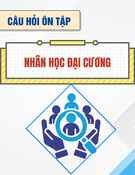
![Câu hỏi ôn tập Xã hội học đại cương [năm] tốt nhất](https://cdn.tailieu.vn/images/document/thumbnail/2025/20250711/kimphuong1001/135x160/4511752205865.jpg)

![Câu hỏi ôn tập Xã hội học đại cương [năm] chuẩn nhất](https://cdn.tailieu.vn/images/document/thumbnail/2025/20250709/kimphuong1001/135x160/7421752031290.jpg)


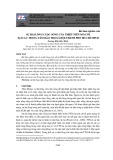
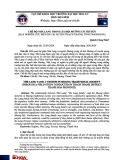
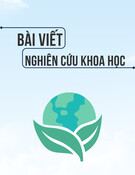
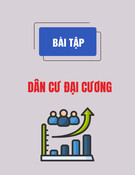
![Sổ tay Hướng dẫn truyền thông về lao động trẻ em [Mới nhất]](https://cdn.tailieu.vn/images/document/thumbnail/2025/20251114/kimphuong1001/135x160/7201763091001.jpg)
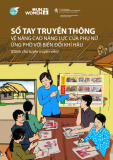
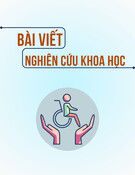
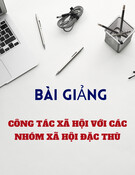


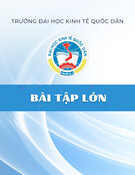

![Cẩm nang Thanh niên hành động [Mới nhất]](https://cdn.tailieu.vn/images/document/thumbnail/2025/20251017/kimphuong1001/135x160/1521760665202.jpg)

